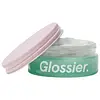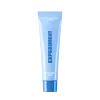What's inside
What's inside
 Key Ingredients
Key Ingredients

 Benefits
Benefits

 Concerns
Concerns

 Ingredients Side-by-side
Ingredients Side-by-side

Water
Skin ConditioningPhytosteryl/Isostearyl/Cetyl/Stearyl/Behenyl Dimer Dilinoleate
Skin ConditioningOrbignya Oleifera Seed Oil
EmollientGlycerin
HumectantPhytosteryl/Behenyl/Octyldodecyl Lauroyl Glutamate
Skin ConditioningTheobroma Grandiflorum Seed Butter
Skin ConditioningCetearyl Olivate
Glyceryl Stearate
EmollientCetearyl Alcohol
Emollient1,2-Hexanediol
Skin ConditioningLactobacillus Ferment Lysate Filtrate
Skin ConditioningSorbitan Olivate
EmulsifyingEthyl Linoleate
EmollientInulin Lauryl Carbamate
Emulsion StabilisingChlorella Vulgaris Extract
Skin ConditioningLeuconostoc/Radish Root Ferment Filtrate
AntimicrobialTocopherol
AntioxidantArginine
MaskingSclerotium Gum
Emulsion StabilisingPropanediol
SolventSorbitan Isostearate
EmulsifyingLactic Acid
BufferingDimethicone
EmollientHydroxyethyl Acrylate/Sodium Acryloyldimethyl Taurate Copolymer
Emulsion StabilisingHydroxyacetophenone
AntioxidantWater, Phytosteryl/Isostearyl/Cetyl/Stearyl/Behenyl Dimer Dilinoleate, Orbignya Oleifera Seed Oil, Glycerin, Phytosteryl/Behenyl/Octyldodecyl Lauroyl Glutamate, Theobroma Grandiflorum Seed Butter, Cetearyl Olivate, Glyceryl Stearate, Cetearyl Alcohol, 1,2-Hexanediol, Lactobacillus Ferment Lysate Filtrate, Sorbitan Olivate, Ethyl Linoleate, Inulin Lauryl Carbamate, Chlorella Vulgaris Extract, Leuconostoc/Radish Root Ferment Filtrate, Tocopherol, Arginine, Sclerotium Gum, Propanediol, Sorbitan Isostearate, Lactic Acid, Dimethicone, Hydroxyethyl Acrylate/Sodium Acryloyldimethyl Taurate Copolymer, Hydroxyacetophenone
Water
Skin ConditioningCaprylic/Capric Triglyceride
MaskingGlycerin
HumectantCarthamus Tinctorius Seed Oil
MaskingCetearyl Alcohol
EmollientDiglycerin
HumectantC10-18 Triglycerides
EmollientPetrolatum
EmollientPhenyl Trimethicone
Skin ConditioningCeteareth-20
CleansingDimethicone
EmollientPhenoxyethanol
PreservativeHydroxyethyl Acrylate/Sodium Acryloyldimethyl Taurate Copolymer
Emulsion StabilisingCentella Asiatica Extract
CleansingSqualane
EmollientEctoin
Skin ConditioningPhospholipids
Skin ConditioningEuphorbia Cerifera Cera
AstringentPolysorbate 60
EmulsifyingPhytosphingosine
Skin ConditioningEthylhexylglycerin
Skin ConditioningSodium Polyacrylate
AbsorbentSorbitan Isostearate
EmulsifyingPEG-40 Hydrogenated Castor Oil
EmulsifyingPolysorbate 20
EmulsifyingGuaiazulene
AntimicrobialTocopheryl Acetate
AntioxidantCaprylyl Glycol
EmollientWater, Caprylic/Capric Triglyceride, Glycerin, Carthamus Tinctorius Seed Oil, Cetearyl Alcohol, Diglycerin, C10-18 Triglycerides, Petrolatum, Phenyl Trimethicone, Ceteareth-20, Dimethicone, Phenoxyethanol, Hydroxyethyl Acrylate/Sodium Acryloyldimethyl Taurate Copolymer, Centella Asiatica Extract, Squalane, Ectoin, Phospholipids, Euphorbia Cerifera Cera, Polysorbate 60, Phytosphingosine, Ethylhexylglycerin, Sodium Polyacrylate, Sorbitan Isostearate, PEG-40 Hydrogenated Castor Oil, Polysorbate 20, Guaiazulene, Tocopheryl Acetate, Caprylyl Glycol
 Reviews
Reviews

Ingredients Explained
These ingredients are found in both products.
Ingredients higher up in an ingredient list are typically present in a larger amount.
Cetearyl alcohol is a mixture of two fatty alcohols: cetyl alcohol and stearyl alcohol. It is mainly used as an emulsifier. Emulsifiers help prevent the separation of oils and products. Due to its composition, it can also be used to thicken a product or help create foam.
Cetearyl alcohol is an emollient. Emollients help soothe and hydrate the skin by trapping moisture.
Studies show Cetearyl alcohol is non-toxic and non-irritating. The FDA allows products labeled "alcohol-free" to have fatty alcohols.
This ingredient is usually derived from plant oils such as palm, vegetable, or coconut oils. There is debate on whether this ingredient will cause acne.
Due to the fatty acid base, this ingredient may not be Malassezia folliculitis safe.
Learn more about Cetearyl AlcoholDimethicone is a type of synthetic silicone created from natural materials such as quartz.
What it does:
Dimethicone comes in different viscosities:
Depending on the viscosity, dimethicone has different properties.
Ingredients lists don't always show which type is used, so we recommend reaching out to the brand if you have questions about the viscosity.
This ingredient is unlikely to cause irritation because it does not get absorbed into skin. However, people with silicone allergies should be careful about using this ingredient.
Note: Dimethicone may contribute to pilling. This is because it is not oil or water soluble, so pilling may occur when layered with products. When mixed with heavy oils in a formula, the outcome is also quite greasy.
Learn more about DimethiconeGlycerin is already naturally found in your skin. It helps moisturize and protect your skin.
A study from 2016 found glycerin to be more effective as a humectant than AHAs and hyaluronic acid.
As a humectant, it helps the skin stay hydrated by pulling moisture to your skin. The low molecular weight of glycerin allows it to pull moisture into the deeper layers of your skin.
Hydrated skin improves your skin barrier; Your skin barrier helps protect against irritants and bacteria.
Glycerin has also been found to have antimicrobial and antiviral properties. Due to these properties, glycerin is often used in wound and burn treatments.
In cosmetics, glycerin is usually derived from plants such as soybean or palm. However, it can also be sourced from animals, such as tallow or animal fat.
This ingredient is organic, colorless, odorless, and non-toxic.
Glycerin is the name for this ingredient in American English. British English uses Glycerol/Glycerine.
Learn more about GlycerinThis is a synthetic polymer. It helps improve the texture of products by adding thickness and gel-like feel.
It is also an emulsifer, meaning it prevents ingredients such as oil and water from separating. It also helps evenly disperse other ingredients.
Sorbitan Isostearate is an emulsifer and cleaning agent. It is created from isostearic acid and sorbitol.
As an emulsifier, Sorbitan Isostearate prevents oils and water from separating.
Due to its isostearic acid base, it may not be safe for Malassezia or fungal acne.
Learn more about Sorbitan IsostearateWater. It's the most common cosmetic ingredient of all. You'll usually see it at the top of ingredient lists, meaning that it makes up the largest part of the product.
So why is it so popular? Water most often acts as a solvent - this means that it helps dissolve other ingredients into the formulation.
You'll also recognize water as that liquid we all need to stay alive. If you see this, drink a glass of water. Stay hydrated!
Learn more about Water